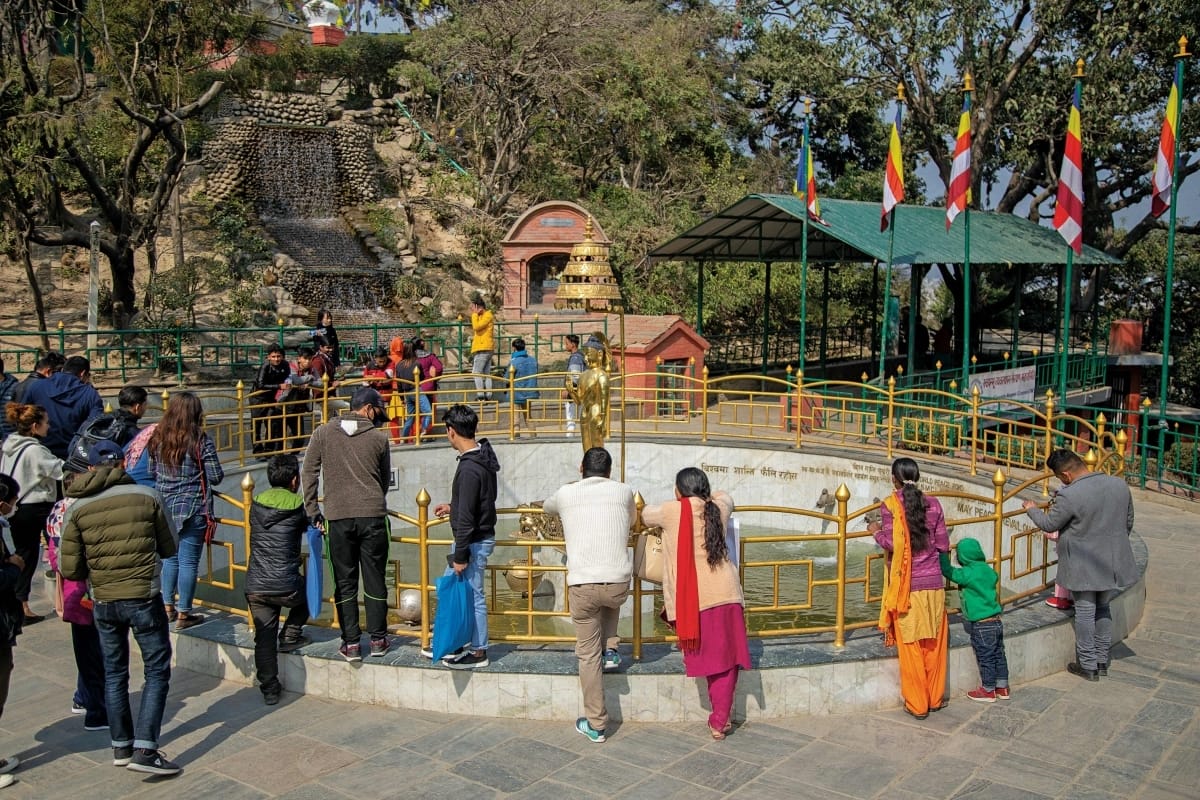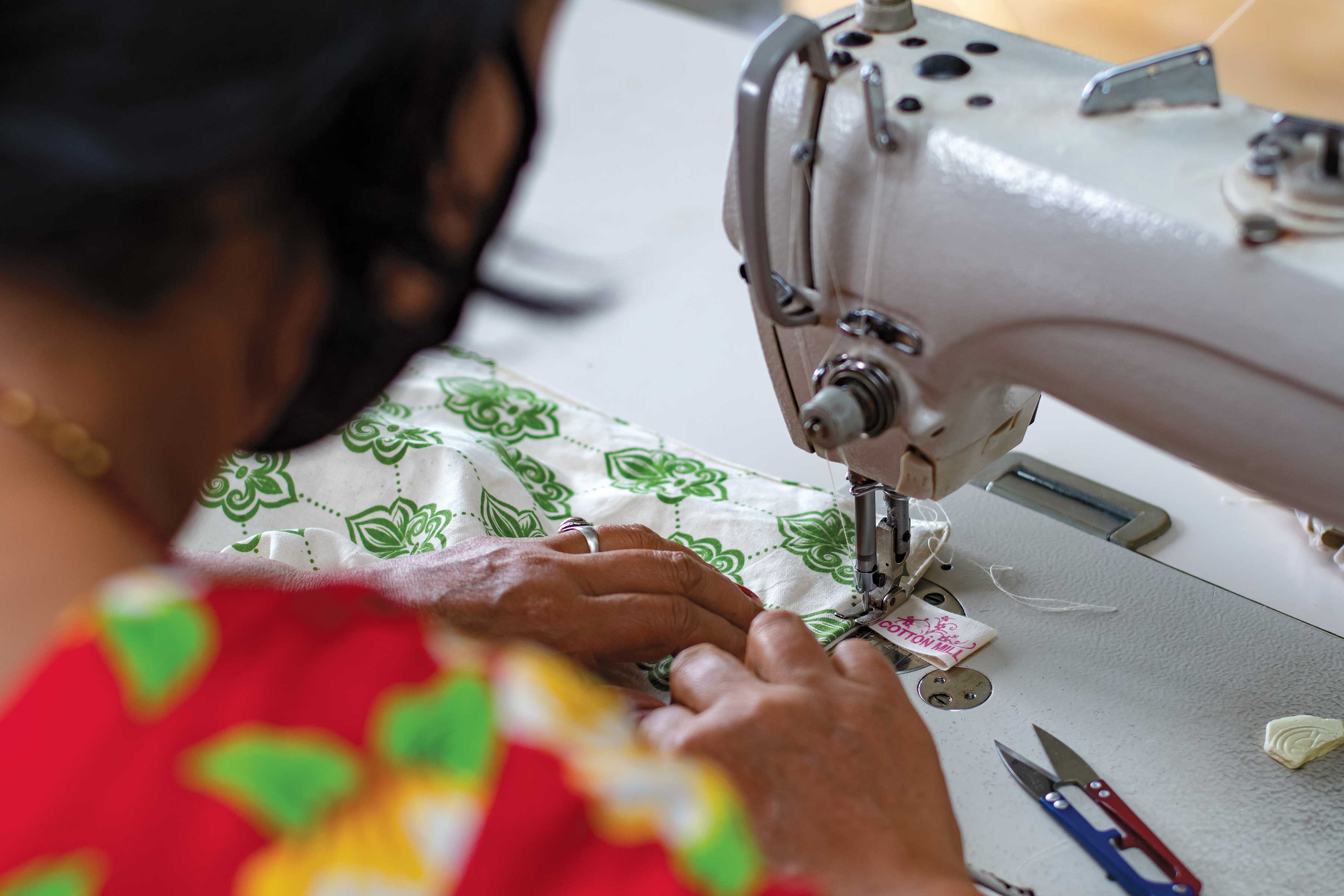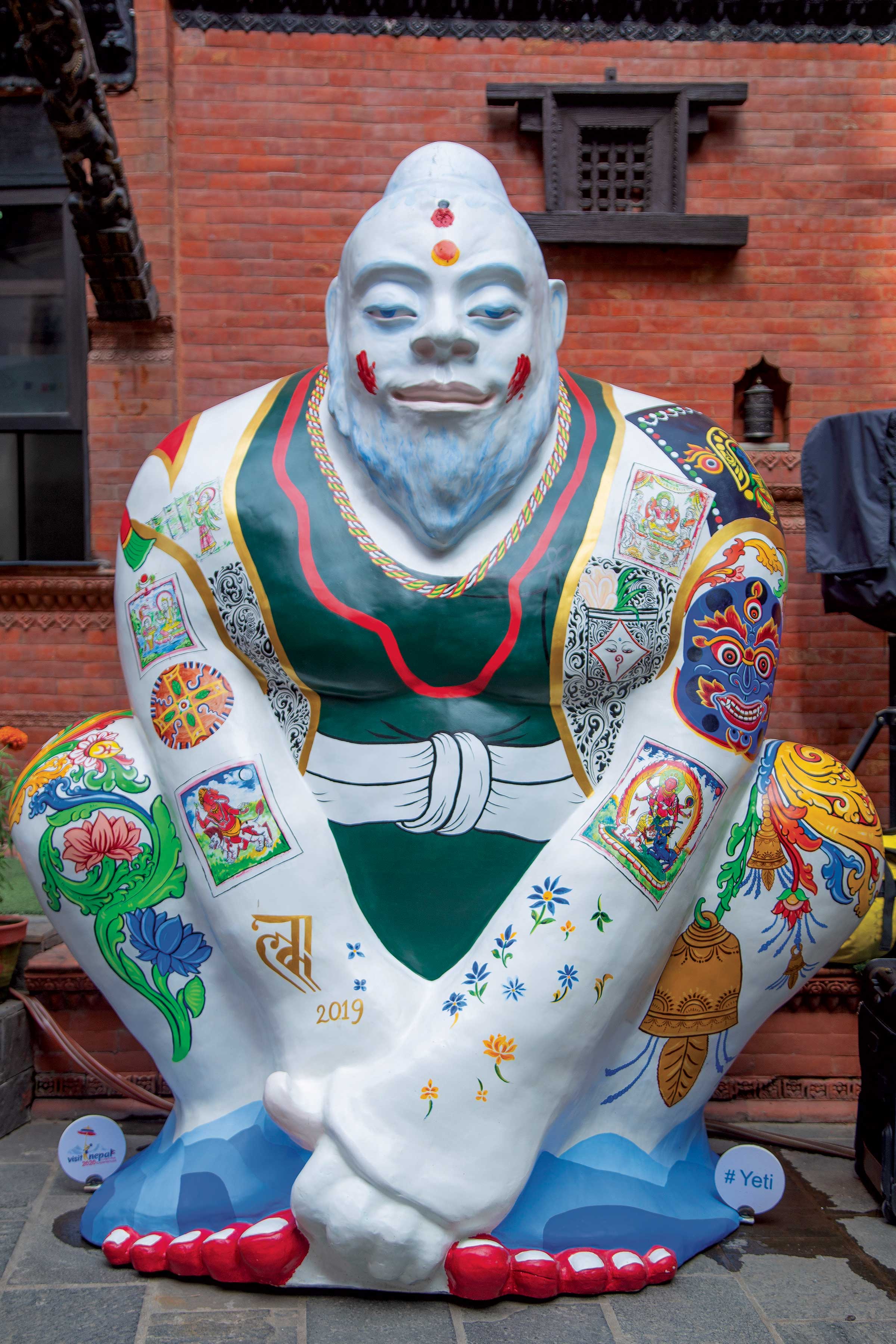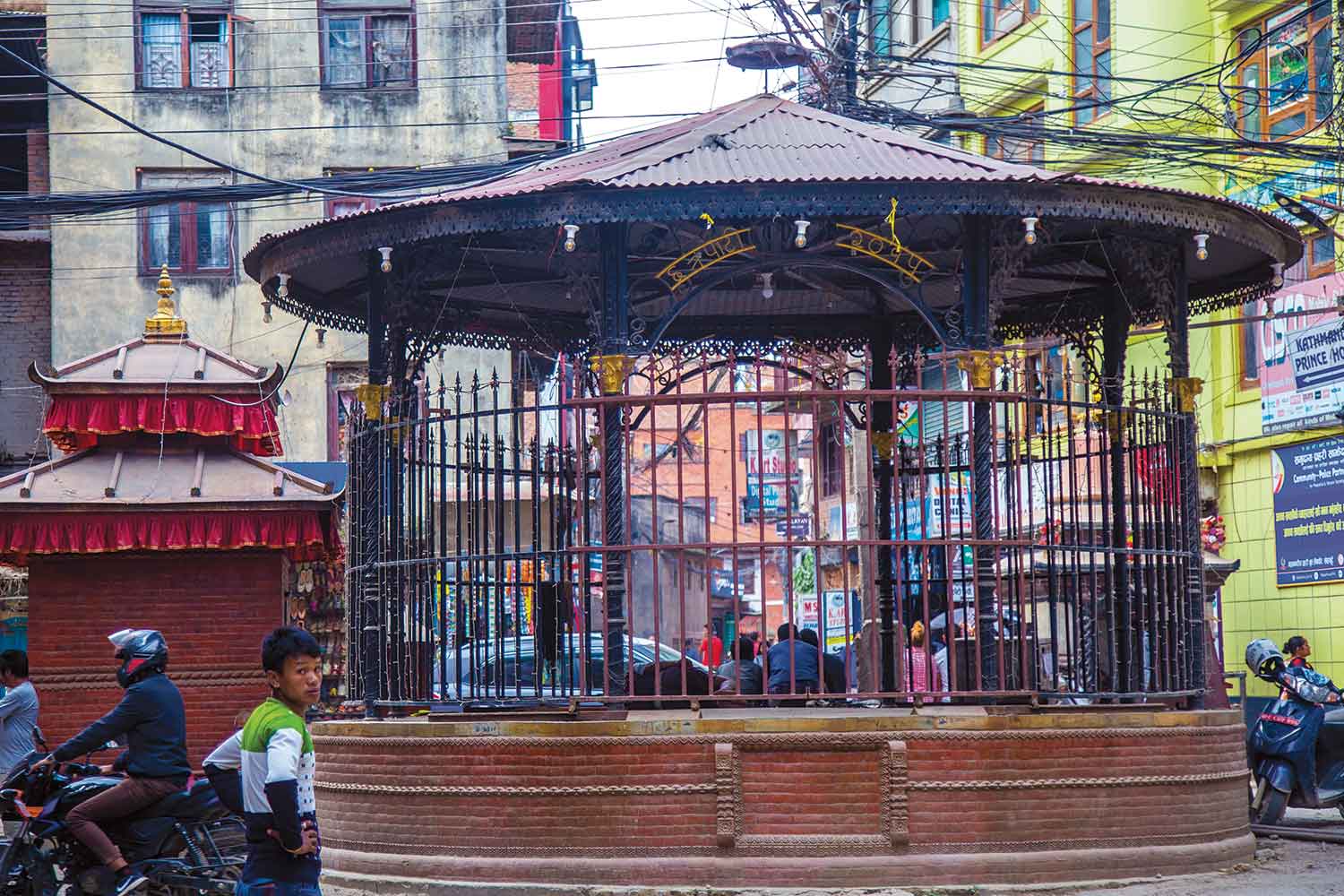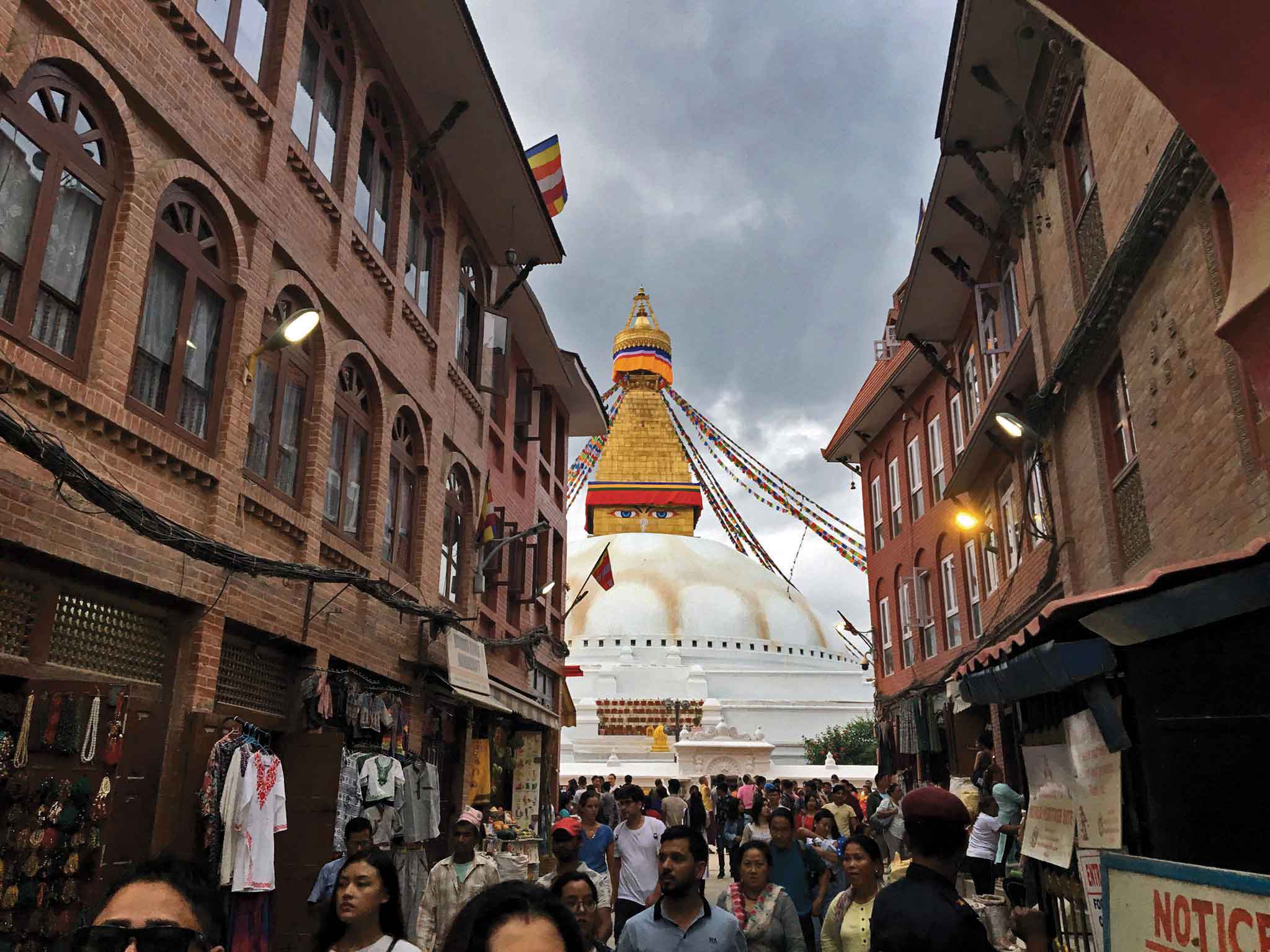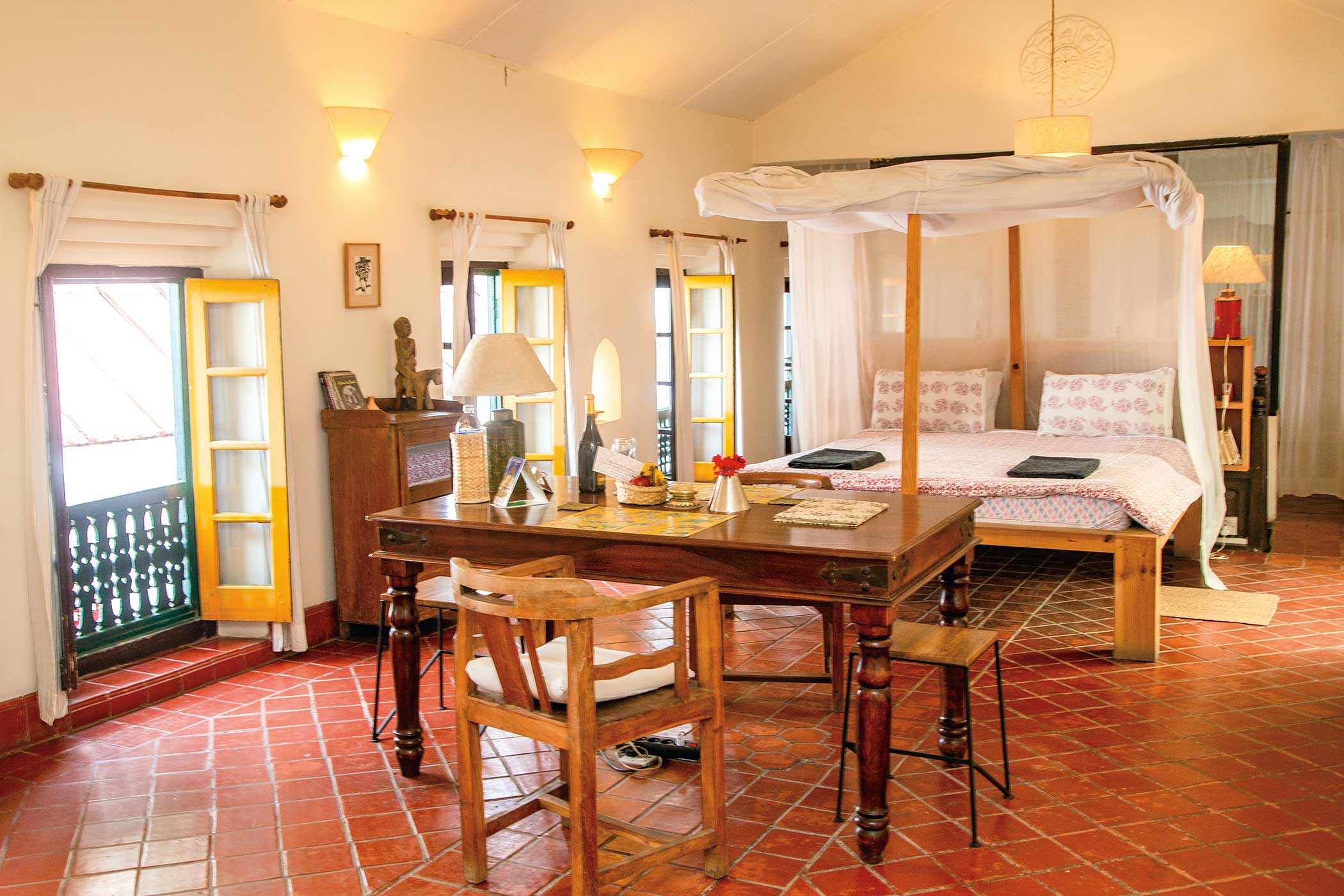
Aksheshwar Mahavihar is in Pulchowk. It is located some way from the huge grassy stupa situated by the roadside, one of the four famous stupas built by Emperor Ashoka during his sojourn to Nepal. The lane behind it leads to a short and wide flight of stairs that takes you to the mahavihar, from where you get quite a nice view all around. Like most mahavihars, here, too, one will find a place of solace and serenity, and tranquility in the very air. Once a year, a big art and craft exhibition is held on its premises and in its many large rooms, showcasing works by the talented artists and craftspeople of Patan, ‘the city of the arts’. There is a painting and sculpture school here, as well, and many of their students also display their works on the occasion. Spend some time at this mahavihars, and you’ll find yourself refreshed and reenergized with a new spiritual energy.
 Hiranayavarna Mahavihar is also known as ‘The Golden Temple’. Situated close to Patan Durbar Square, in Kwabahal, this three-roofed pagoda-style shrine houses a large silver figure of Sakyamuni Buddha inside silver-embossed doors. Here, the ambience is particularly serene and spiritual in the early hours of the morning. If you are up to it, go there just before the breaking of the dawn when, contrastingly dramatically with the empty streets outside, you’ll find large numbers of ardent devotees inside the temple, and flickering butter lamps and wafts of incense smoke all around. It will be an experience that will remain with you forever. There’s a smaller temple in front of the main shrine, inside which is a silver replica of Swoyambhunath. Around the courtyard are idols many Buddhist deities. On the first floor of the temple is meditation hall, with a statue of Amoghapasa Lokeswor up front. Also on the first floor is the Amitabha Sukhawati Bhawan with a statue of Amitabha Buddha. Due to the many deities present here, it is believed that one doesn’t need to pay visits to other shrines if one visits the Hiranayavarna Mahavihar.
Hiranayavarna Mahavihar is also known as ‘The Golden Temple’. Situated close to Patan Durbar Square, in Kwabahal, this three-roofed pagoda-style shrine houses a large silver figure of Sakyamuni Buddha inside silver-embossed doors. Here, the ambience is particularly serene and spiritual in the early hours of the morning. If you are up to it, go there just before the breaking of the dawn when, contrastingly dramatically with the empty streets outside, you’ll find large numbers of ardent devotees inside the temple, and flickering butter lamps and wafts of incense smoke all around. It will be an experience that will remain with you forever. There’s a smaller temple in front of the main shrine, inside which is a silver replica of Swoyambhunath. Around the courtyard are idols many Buddhist deities. On the first floor of the temple is meditation hall, with a statue of Amoghapasa Lokeswor up front. Also on the first floor is the Amitabha Sukhawati Bhawan with a statue of Amitabha Buddha. Due to the many deities present here, it is believed that one doesn’t need to pay visits to other shrines if one visits the Hiranayavarna Mahavihar.
 Rudravarna Mahavihar in Okubahal, Lalitpur, is next only to Hiranayavarna Mahavihar in importance, and both have many similarities, with their three-roofed pagoda-style architecture and huge statues of Shakyamuni Buddha. But, while Hiranayavarna Mahavihar has a livelier atmosphere, Rudravarna Mahavihar has a quieter ambience, which could also be the reason for it being the best-maintained vihar in the valley. This neat vihar has many interesting features in and around its premises, with a number of well-crafted metal figures in the courtyard, such as a life-sized statue of a king, and other statues of deities and symbolic animals, and mandalas, bells, and vajras. At the four corners are four exquisitely carved deity figures, and there are some tundals (wooden struts) that are believed to be the most ancient tundals in Nepal. The temple also has an invitingly cozy pati (resting place) in front. Just as the dawn is the best time to visit the Hiranayavarna Mahavihar, evening is a good time to do so to Rudrayanavarna Mahavihar, for it is when the evening puja is conducted by a priest dressed in a black robe, whose rituals are accompanied by devotional hymns by a group from the locality.
Rudravarna Mahavihar in Okubahal, Lalitpur, is next only to Hiranayavarna Mahavihar in importance, and both have many similarities, with their three-roofed pagoda-style architecture and huge statues of Shakyamuni Buddha. But, while Hiranayavarna Mahavihar has a livelier atmosphere, Rudravarna Mahavihar has a quieter ambience, which could also be the reason for it being the best-maintained vihar in the valley. This neat vihar has many interesting features in and around its premises, with a number of well-crafted metal figures in the courtyard, such as a life-sized statue of a king, and other statues of deities and symbolic animals, and mandalas, bells, and vajras. At the four corners are four exquisitely carved deity figures, and there are some tundals (wooden struts) that are believed to be the most ancient tundals in Nepal. The temple also has an invitingly cozy pati (resting place) in front. Just as the dawn is the best time to visit the Hiranayavarna Mahavihar, evening is a good time to do so to Rudrayanavarna Mahavihar, for it is when the evening puja is conducted by a priest dressed in a black robe, whose rituals are accompanied by devotional hymns by a group from the locality.
 Mahaboudha Temple is close to Rudravarna Mahavihar, both being in Okubahal, a locality famed for its many famed metal sculptors. It is also known as the ‘temple of one thousand and eight Buddhas’ because it has that number of Buddha figures carved into its terracotta bricks. While the entrance to the temple is through a small, narrow doorway, the shrine itself is a tall, shikhara-style structure, with a modestly spacious courtyard in front. Daily pujas are conducted in the mornings and evenings in a small room full of deity figures on the first floor of the adjoining building, wherein members of the local bhajan mandali (prayer group) take part. The building on the right side has a small café on the ground floor, while the above floor has been renovated and refurbished as a small guest house that provides uniquely Nepali-style accommodations, meaning small, low-height rooms furnished with ethnic furnishings and décor. The USP is, of course, the view of Mahaboudha right next to the windows.
Mahaboudha Temple is close to Rudravarna Mahavihar, both being in Okubahal, a locality famed for its many famed metal sculptors. It is also known as the ‘temple of one thousand and eight Buddhas’ because it has that number of Buddha figures carved into its terracotta bricks. While the entrance to the temple is through a small, narrow doorway, the shrine itself is a tall, shikhara-style structure, with a modestly spacious courtyard in front. Daily pujas are conducted in the mornings and evenings in a small room full of deity figures on the first floor of the adjoining building, wherein members of the local bhajan mandali (prayer group) take part. The building on the right side has a small café on the ground floor, while the above floor has been renovated and refurbished as a small guest house that provides uniquely Nepali-style accommodations, meaning small, low-height rooms furnished with ethnic furnishings and décor. The USP is, of course, the view of Mahaboudha right next to the windows.
 Ratnakar Mahavihar, a three-tiered temple, in is located in Gabahal, on the way to the durbar square. It is similar to the other mahavihars of Lalitpur, with a lovely pagoda-style temple upfront, and a spacious courtyard full of magnificent monuments like mandalas, deity and guardian animal figures, vajras, bells, pati, et al. However, this particular mahavihars is extra special because it is the residence of Kumari, the Living Goddess. It should be noted that many towns and cities in the valley have their own living goddesses. Most visitors here pay homage to the Kumari, who resides with her family on the first floor of the building surrounding the courtyard. Visitors have to take off leather items (shoes, belts) before carrying on up a small narrow flight of stairs. The Kumari sits on a high pedestal chair in a longish room, her hair coiled up in a bun, her eyes kohl-lined, and dressed in gold and red brocade. It is an amazing experience to be up close to a living goddess, as she puts a tika on your forehead, bestowing her blessings. Could well be the highlight of your visit to Nepal!
Ratnakar Mahavihar, a three-tiered temple, in is located in Gabahal, on the way to the durbar square. It is similar to the other mahavihars of Lalitpur, with a lovely pagoda-style temple upfront, and a spacious courtyard full of magnificent monuments like mandalas, deity and guardian animal figures, vajras, bells, pati, et al. However, this particular mahavihars is extra special because it is the residence of Kumari, the Living Goddess. It should be noted that many towns and cities in the valley have their own living goddesses. Most visitors here pay homage to the Kumari, who resides with her family on the first floor of the building surrounding the courtyard. Visitors have to take off leather items (shoes, belts) before carrying on up a small narrow flight of stairs. The Kumari sits on a high pedestal chair in a longish room, her hair coiled up in a bun, her eyes kohl-lined, and dressed in gold and red brocade. It is an amazing experience to be up close to a living goddess, as she puts a tika on your forehead, bestowing her blessings. Could well be the highlight of your visit to Nepal!


